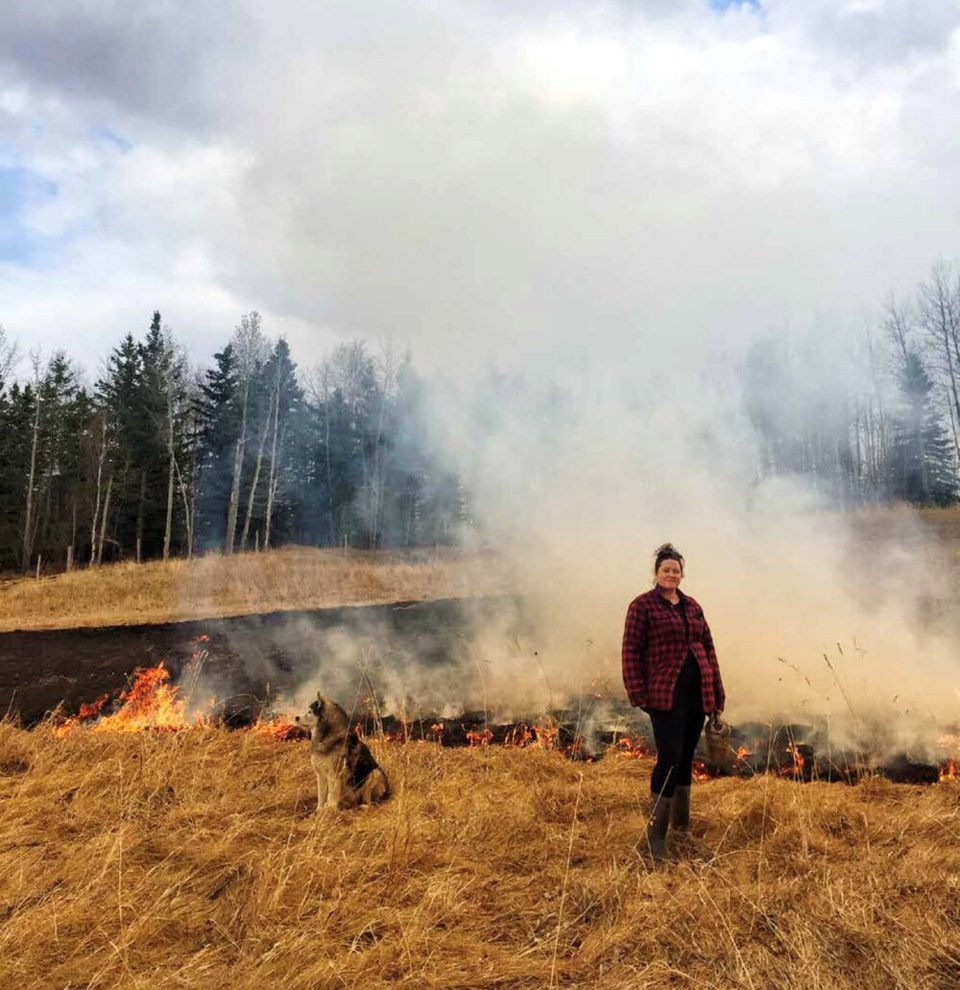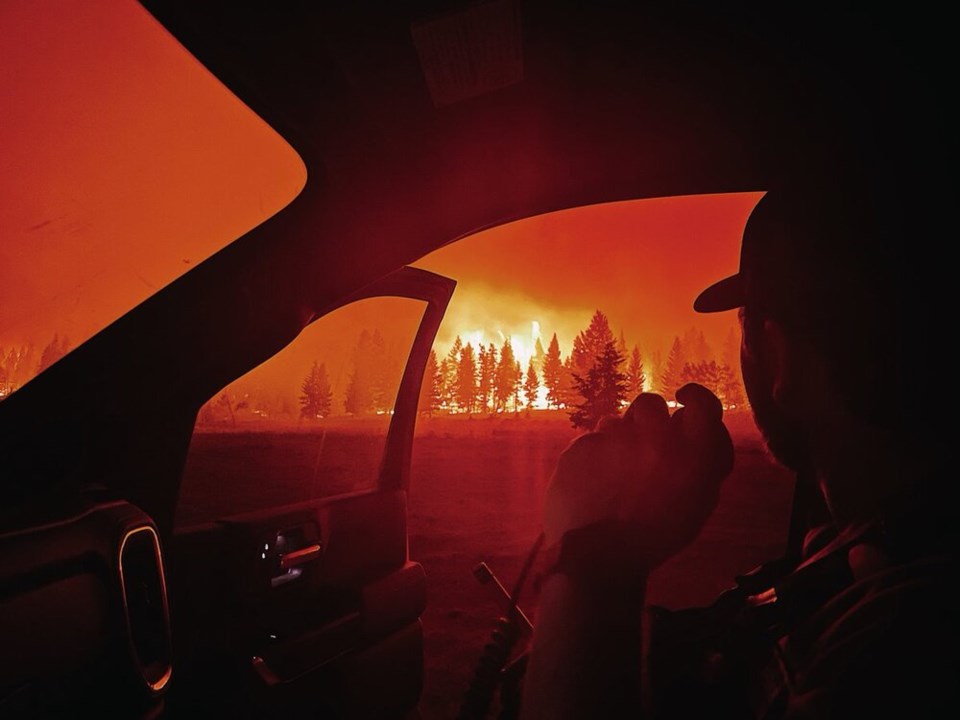Dozens of leading scientists around the world are warning of a "global wildfire crisis" over the coming decades as a warming planet ramps up the chance of increasingly devastating infernos.
In a landmark rapid response report published this week through the United Nations Environment Programme, over 50 experts from six continents warned, "the heating of the planet is turning landscapes into tinderboxes, while more extreme weather means stronger, hotter, drier winds to fan the flames."
By the end of the century, the chance of a repeat of the huge Arctic fires that consumed Siberia in 2020 or Australia's "Black Summer" of 2019-2020 will climb on any given year by between 31 and 57 per cent, the report found.
"It's very rare for people to come together on a report like this," said Amy Cardinal Christianson, a research scientist at the Canadian Forest Service and one of three Canadian authors.
"We've seen those projections of how much the temperature is going to increase. And I mean, if you're a fire researcher, you know that hot, dry weather in the summer basically adds fuel to dry fuel to fire events."
The report comes after B.C. suffered yet another devastating wildfire season.
Researchers have attributed the heat dome that enveloped Western Canada and the U.S. Pacific Northwest last June was made 150 times more likely because of planetary warming caused by humans. A day after the heatwave set a Canadian temperature record of 49.6 C in Lytton, B.C., the village was forced to evacuate as a wildfire burned through the town.
The global study collects a vast body of empirical evidence to back up its projections. In one case, it cites research showing that during the 2017 season, climate change was found to have increased the area burned by between seven and 11 times what it otherwise would have been.
"The summer of 2017 will be remembered as one of the worst wildfire seasons in British Columbia's history," reads a government summary of a fire season that burned a record 1.2 million hectares.
It took only one season for that record to fall.
Other scientists have documented upward trends in burned areas across the forests of eastern Australia, Southeast Asia and the American West. The report says all of them are forecast to see an increase in extreme fire events by the end of the century. And in the Siberian Arctic, scientists worry the burning of peatlands, which store vast amounts of carbon underground, could release a so-called "carbon bomb" on the planet's climate system.
"Even with the most ambitious efforts to curb greenhouse gas emissions, the planet will still experience a dramatic increase in the frequency of extreme fire conditions," says the report.
A THREAT TO MUTUAL AID, PUBLIC HEALTH
Steep increases in burned areas are also expected in Canada's Boreal forest and across Western Canada.
"We're going to be seeing this big increase, and what that does is, in Canada, that really affects our ability to do firefighting," said Christianson.
"We rely a lot during the summer on international support. And so if other communities are also experiencing big fire events at the same time, then you lose that."
By the time wildfires surge 57 per cent around the globe, wildfire suppression resources will be swamped like never before, she warns.
Some of the effects of increased wildfires are already being felt in hard to recognize ways. In B.C.'s Interior, where wildfires burn every summer, but little industry exists, residents suffer some of the greatest fallout from air pollution in the country.
Between 2013 and 2018, the 10 census divisions in the country with the greatest exposure to fine particulate matter (PM2.5) were all in B.C.'s Interior, according to a 2021 Health Canada analysis of the impacts of air pollution on human health.
Of those, half the census divisions were among the top 10 slices of the country with the highest per capita rates of premature death. That includes the town of Nelson, B.C., where last summer's persistent smoke led at least one doctor to clinically diagnose a patient with climate change — likely a global first.
"A lot of people in the Kootenays sort of thought that this would be a good place to hide out while the rest of the world falls apart. But it's, of course, hitting us here, just like it's hitting many places, and we're really seeing the impacts," emergency room doctor Dr. Kyle Merritt told Glacier Media at the time.
Christianson says the wide-ranging impacts on public health are only likely to increase as smokey skies become a permanent backdrop of summer.
But while the global wildfire report paints a dire image of the future, it also points to Canadian Indigenous peoples and their traditional burning practices as beacons to weather increasingly hot and dry summers.

AN INDIGENOUS SOLUTION
In many locations across Canada, Indigenous communities will face the brunt of the fallout.
Christianson, who runs the Canadian Wildland Fire Evacuation Database, says that the trend has been clear for over four decades — of the more than 522,000 people have been evacuated due to wildfire and smoke since 1980, nearly half have come from Indigenous-majority communities.
Those trends are expected to continue. In the past decade, the number of Canadian reserves evacuated due to wildfire has doubled; in B.C., the number climbed 119 per cent, according to the database.
At the same time, Indigenous communities are some of the planet's most important stewards: they comprise only five per cent of the world's population but protect roughly 85 per cent of the world's biodiversity. But in B.C., a series of laws have prevented them from applying fire to the land through cultural or "cool burning," as many Indigenous peoples put it.
Before Europeans settled in B.C., it's thought more than 500,000 hectares of land were burned every year. However, unlike today, Indigenous people intentionally lit many of those fires, containing them to shoulder seasons when snow was still melting, or rain had fallen.
That practice has been suppressed through multiple laws for well over 140 years, concentrating much of the decision-making around wildfires into the hands of a handful of government agencies.
Government strategy has been to snuff out wildfires for decades before they can grow, all part of an expensive strategy to protect forests as an economic resource.
According to the UN report, Canada's total annual expenditure for national wildland fire management activities ranges every year between $500 million and $1 billion. But since the 1970s, it has increased about $120 million every decade.
That has allowed vast quantities of wood fuel to build up to unprecedented levels in places like British Columbia, what some have warned is a "ticking time bomb" waiting to go off.
"We need to maintain that forest in a healthy state. And that's the beauty of burning prescribed fire or cultural fire. It can really be used to kind of maintain a healthy, resilient low fire risk forest," said Christianson.
But even with a growing body of Western science that says traditional burning practices work, Christianson says there are a lot of barriers to decentralize decision-making and scale-up traditional burning.
"We think that you need to use like a forestry diploma or a university degree to be able to make these decisions or sign off on things," she said. "Many Indigenous people might have 30, 40 years experience with fire, and they're kept out of leadership positions because they don't have that Western education."
SIGNS OF CHANGE
Indigenous communities and their firekeepers have long been the ones keeping traditional burning knowledge alive to protect their homes and wild food sources.
Others appear to be catching on. At the national level, the United Nations report notes wildfire management experts in Canada were the first federal jurisdiction in the world to recognize a need to collaborate with Indigenous peoples as part of a decade-long blueprint for wildland fire science.
Even B.C.'s government has shown signs it is ready for a paradigm shift away from wildfire suppression and toward prevention.
A day before the UN wildfire report was released, the B.C. government announced a budget that included a $517 million spending pledge to help respond to extreme weather events. In addition to developing an extreme heat response framework, expanding the River Forecast Centre and the provincial floodplain mapping program, the province said it would move the BC Wildfire Services to a proactive, year-round model.
B.C. is way behind. Jurisdictions like Australia and California have already collaborated with their Indigenous counterparts, and in Florida, year-round preventative burning has been carried out for half a century, says Christianson.
"They're practically getting fire on the ground in good ways that we can really emulate. It's not like you have to really start from scratch," she added.
The UN report's findings are still projections. One way Christianson likes to re-think what the future of wildfire could look like is to replace "fires of chance with fires of choice."
"Fire is something that's needed by our forests in Canada, but fire in a good way. Not these scary fires that we're seeing all summer," she said.
"We need to start living with fire instead of experiencing these as more extraordinary events that are causing disasters."





